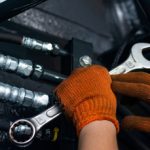Common Causes of Hydraulic Hose Failure

Insufficient Hose Assembly
Improper hose assembly is one of the primary causes of hydraulic hose failure. This includes using the wrong size or type of hose, incorrect fittings, or poor assembly techniques. Using the wrong size hose can lead to excessive pressure or flow issues, causing the hose to fail. Similarly, using incorrect fittings or not properly attaching them can lead to leaks or blowouts. It is essential to carefully select the appropriate hose and fittings, following the manufacturer’s guidelines, and using proper assembly techniques to ensure a secure and reliable hose assembly.
Abrasion and Wear
Another common cause of hydraulic hose failure is abrasion and wear. Hydraulic hoses are often subject to rubbing against other components, surfaces, or passing through tight spaces. Continuous friction can wear down the hose cover, exposing the reinforcement layers, leading to leaks or bursts. It is crucial to properly route and protect the hoses using abrasion-resistant sleeves, clamps, or guards. Regular inspections should be conducted to identify any signs of wear and replace the hoses promptly to prevent failure.
Incorrect Bend Radius
Hydraulic hoses have a specified minimum bend radius that should not be exceeded. Bending the hose beyond its recommended limit can damage the reinforcement layers or cause excessive stress on the hose, leading to failure. It is important to adhere to the manufacturer’s bend radius guidelines and properly route the hoses to avoid any kinks or excessive bending. Using a hose with a larger bend radius or utilizing elbow fittings where necessary can help prevent failure due to incorrect bending.
Excessive Pressure or Temperature
Operating hydraulic hoses under excessive pressure or temperature can significantly impact their lifespan and lead to failure. Exceeding the maximum working pressure rating of the hose can cause it to rupture or burst. Similarly, exposure to high temperatures can accelerate aging, reducing the hose’s flexibility and strength. It is essential to ensure that the hydraulic system is properly calibrated, and the pressure and temperature are within the manufacturer’s recommended limits. Regular monitoring and maintenance of the system can help prevent pressure or temperature-related hose failures.
Chemical Compatibility
Hydraulic hoses often come in contact with hydraulic fluid, which can contain various chemicals and additives. Prolonged exposure to incompatible fluids can cause the hose tube and cover to degrade, leading to leaks or hose failure. It is critical to ensure that the hydraulic hose is compatible with the specific fluid being used by referring to the manufacturer’s compatibility charts. Regularly monitor the fluid condition and promptly address any signs of incompatibility to prevent hose failure.
Improper Maintenance and Inspection
Lack of proper maintenance and regular inspections can also contribute to hydraulic hose failure. Over time, hoses can develop cracks, leaks, or degradation that may go unnoticed without regular inspections. It is important to establish a maintenance schedule and conduct visual inspections of the hoses for signs of wear, leaks, or damage. Additionally, regular maintenance should include cleaning the hoses, checking fittings for tightness, and replacing hoses as needed. By implementing a proactive maintenance and inspection program, potential hose failures can be identified and addressed before they cause significant issues.
Summary
Understanding the common causes of hydraulic hose failure is crucial for preventing costly downtime, equipment damage, and potential safety hazards. Insufficient hose assembly, abrasion and wear, incorrect bend radius, excessive pressure or temperature, chemical compatibility issues, and improper maintenance and inspection practices are among the most common culprits. By selecting the appropriate hose and fittings, properly routing and protecting the hoses, adhering to pressure and temperature limits, ensuring chemical compatibility, and implementing regular maintenance and inspection protocols, hydraulic hose failures can be minimized, ensuring efficient and safe operation of hydraulic systems.
Need Hose & Fittings Specialists in San Jose, CA?
Welcome Royal Brass Incorporated! We are your 3rd generation, family-owned, local hose supplier! Our family has dedicated our services to supplying northern California with all types of hoses, fittings, flanges, regulators, valves, adapters, and gauges. We pride ourselves on having the most extensive inventory in northern California. Our inventory ensures that we can fix most products on site, the same day. Here at Royal Brass Incorporated, we only hire qualified individuals who are trained in factory sales. Our fully stocked warehouses ensure that we can fill your hydraulic and pneumatic hose, tubing, and fitting needs on time, every time. High-quality customer service is our goal and has been since 1952. Contact us today!
Categorised in: Hydraulic Hose, Hydraulic Hose Fittings





